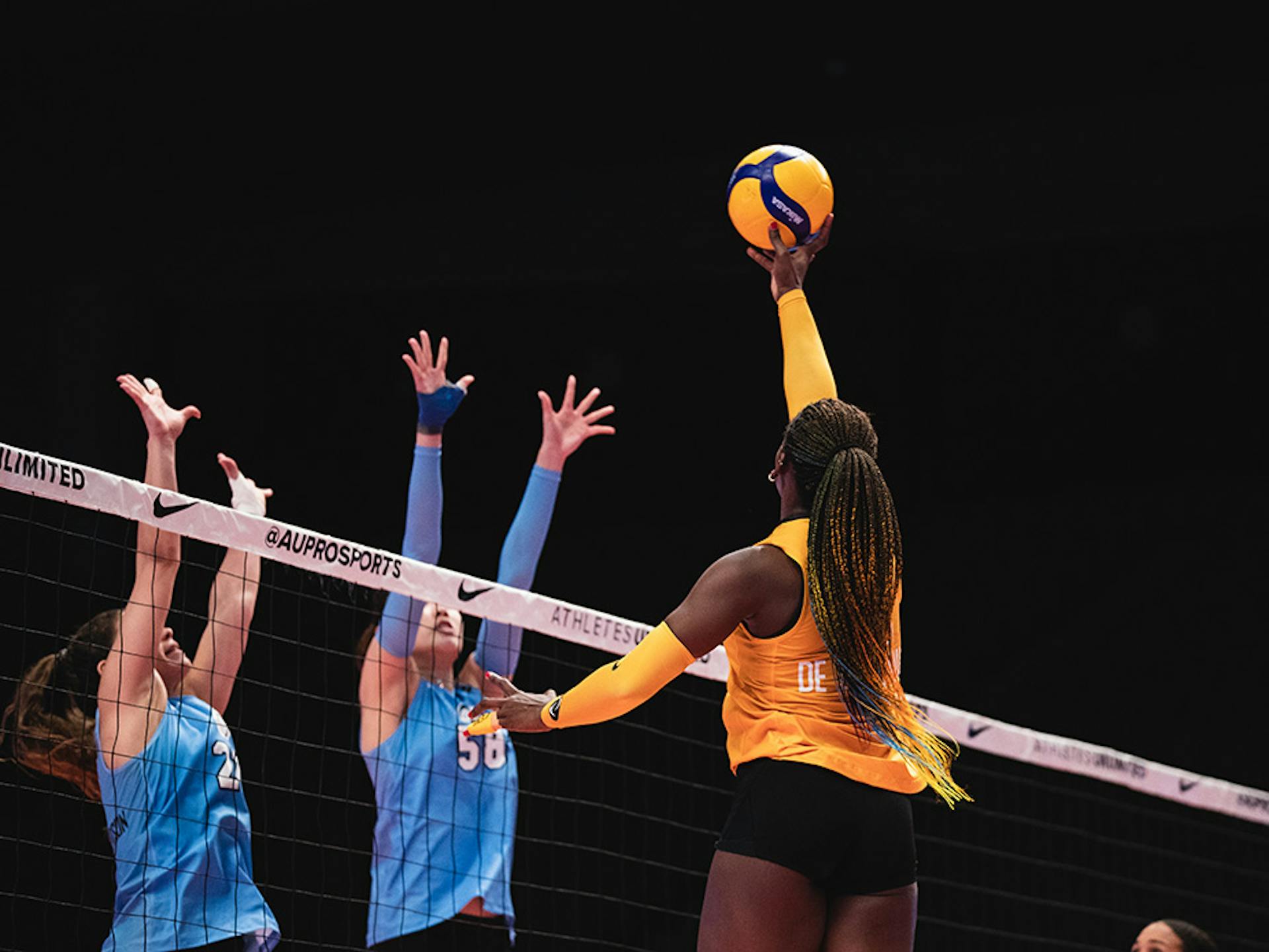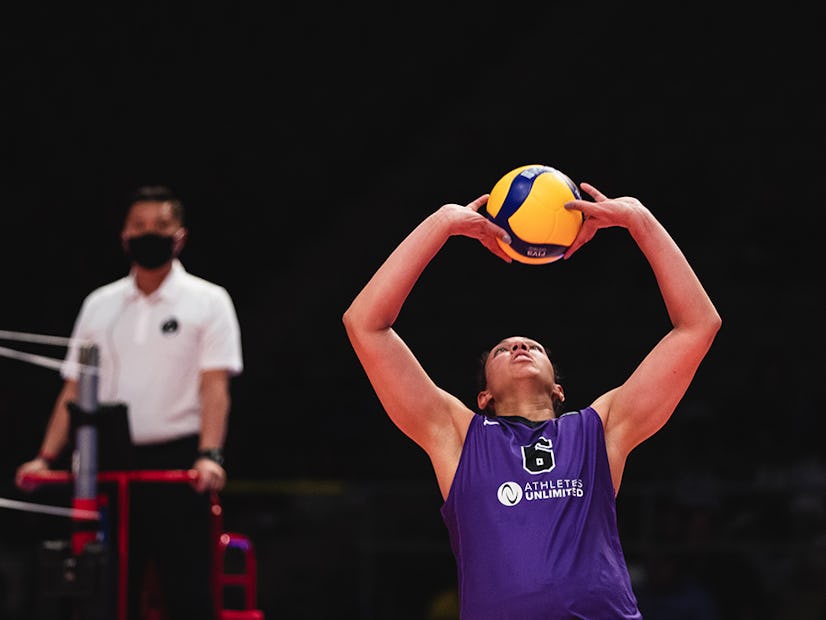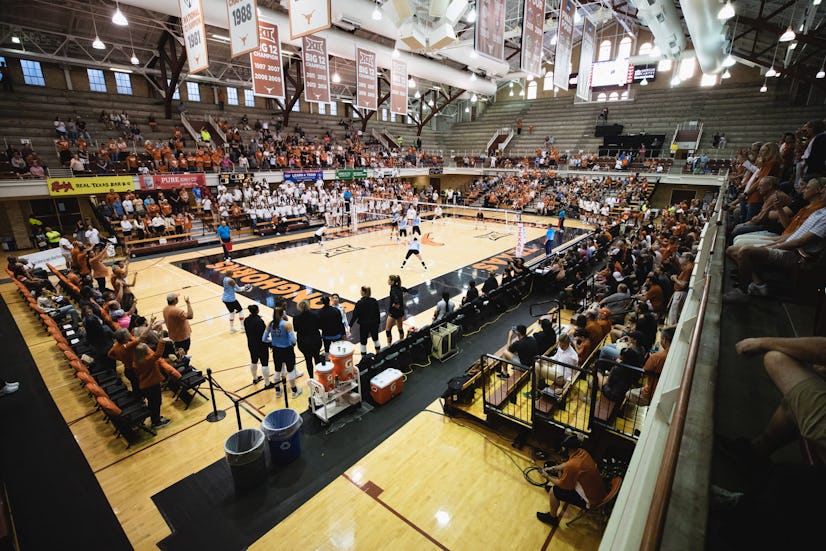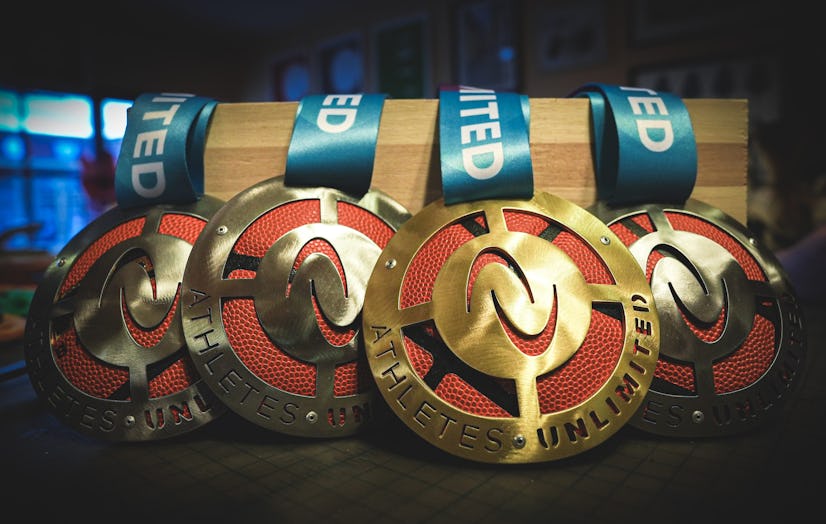
Volleyball: Terms to Know
Learn more about the terms used in women’s professional volleyball.
Ace: a serve that is not passable by the opposing team. This results immediately in a point.
Assist: passing or setting the ball to a teammate who then earns a kill.
Attack/Hit: any contact in which a player swings at the ball with one open hand to send it over the net. This is typically the third contact.
Back Row Attack: an attack that comes from a player behind the 3m line. If the player steps on or past the line during take-off, the attack is illegal.
Block: a movement made by a front row player in which they extend their arms with open hands above their head to prevent an attack from coming over the net. A block does not count as one of the three contacts a team is allowed to make and a player that blocks the ball may contact the ball again.
Block Touch: occurs when a front row player touches the attacked ball, but the ball still comes over to the defensive side of the court or out of bounds. A block touch does not count towards one of the defensive sides three touches.
Cover: Occurs when a the attacking team keeps a block in play to continue a rally.
Defensive Team: The team that receives the ball via a serve.
Dig: the first contact made after an attacker from the opposing team sends the ball over the net. It can be made with the forearms, open or closed hands, or any other part of the body.
Free Ball: Occurs when a team sends the ball over the net with their forearms instead of an attack.
Libero: a player that serves as a defensive specialist. They are not allowed to serve or rotate to the front line and are able to enter and leave the game without a substitution. They are also not allowed to perform an overhead set in front of the 10 foot line and have a hitter attack while being above the height of the net.
Tip: The libero will be wearing a different colored jersey.
Joust: when opposing players play the ball simultaneously.
Kill: an attack is that unable to be returned or controlled by the opposing team, resulting in a point for the attacking team.
Match: the whole game.
Middle Blocker: the player that plays in the middle of the front row whose main job is to attack and block. They are often replaced by the libero in the back row.
Offensive Team: The team that begins play via a serve.
Opposite Hitter: plays on the right side of the court in the front or back row. They are primarily responsible for attacking and passing the ball.
Outside Hitter: plays on the left side of the court in the front or back row. They are primarily responsible for attacking and passing the ball.
Pancake: An emergency move in which a player makes a dive in an attempt to save the ball with one open hand on the floor.
Rally: the time during which the ball is in play.
Serve: use to put the ball into play from behind the end-line. The serving player must hit the ball over the net.
Set (within a match): each individual game within the overall match.
Set: a movement in which the player directs a ball to a point where a player can spike it into the opposing team’s court. A set typically occurs above the player’s head, but can also occur as an underhand passing movement.
Setter: the player responsible for calling offensive plays that direct teammates to the correct location. The setter is then responsible for passing them a “hittable” ball.
Side-Out: occurs when the team that is receiving a serve wins the rally, resulting in the serve changing hands.
Sprawl/Dive: An emergency move in which a player lands on the floor in an attempt to save the ball before it hits the floor.
In-System: When a team can run their planned offense from a perfect pass situation.
Out-of-System: When a team is unable to run their planned plays due to a poor pass situation.
Tip: a “soft” overhand attack that doesn’t involve a full arm swing or a hard hit ball.
Transition: Occurs when a team is on defense and regains control on its side of the court in a rally, at which point they are then on offense.
For a full overview of the Athletes Unlimited Volleyball points system, click here.

Join the Unlimited Club
Unlock exclusive benefits with your FREE membership
Benefits
- Follow Your Favorite Sports
- Enjoy Virtual Fan Events
- Chat on the Community Board
- Vote for Game MVP, Seasonal Awards
- Play in the AU Fantasy League
...and more







